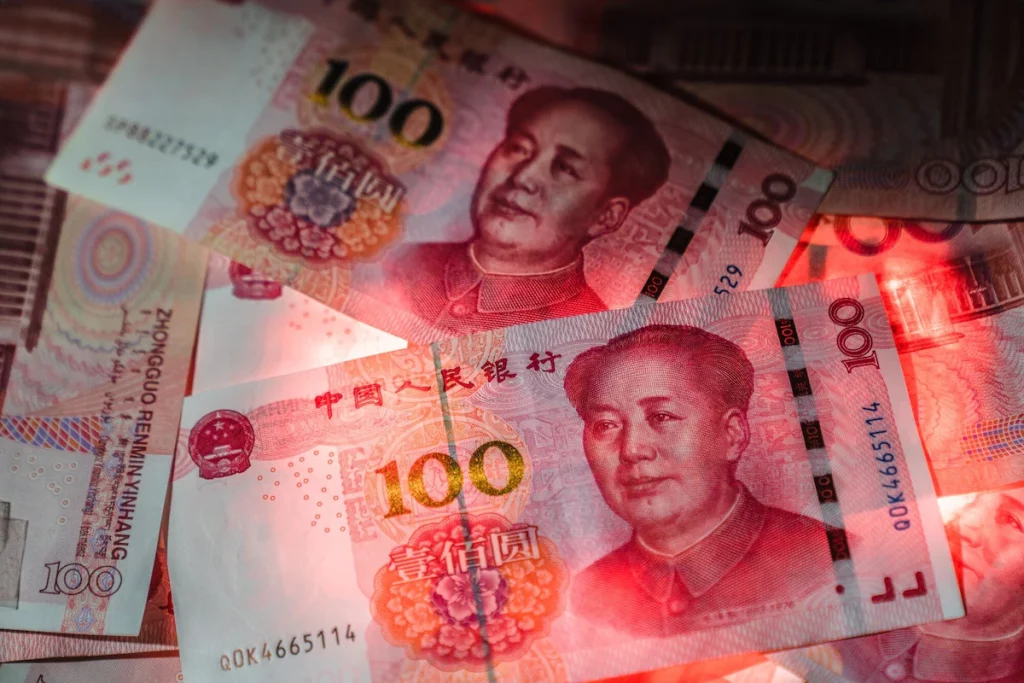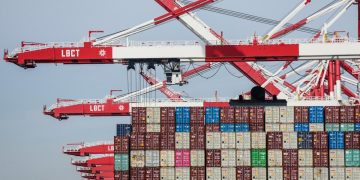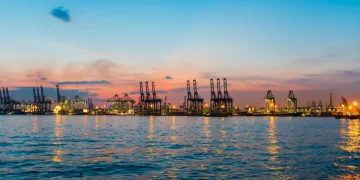In April 2025, the download volume of China’s digital yuan (e-CNY) wallet apps in Southeast Asian countries such as the Philippines and Indonesia surged dramatically. This unexpected spike coincided with troubling developments in the region’s peer-to-peer (P2P) lending markets—Malaysia’s P2P platforms reported their highest debt default rates in five years, signaling escalating credit risk in an already fragile shadow banking sector. The simultaneous rise of a cutting-edge digital currency pilot alongside deteriorating local shadow debt raises a critical question: why is the Chinese digital yuan’s growing popularity in Southeast Asia masking deeper problems in regional P2P lending?
This paradox captures a complex and multifaceted contradiction in the Asia-Pacific financial ecosystem. On one hand, China’s digital yuan rollout abroad reflects Beijing’s ambitions to expand its digital currency footprint and promote regional financial connectivity. On the other, the surge of e-CNY adoption coincides with mounting credit stress in Southeast Asia’s largely unregulated shadow lending markets, which continue to serve millions of consumers and small businesses excluded from formal banking. The challenge lies in understanding whether the digital yuan’s rising “hot-clicks” represent genuine economic integration or instead obscure structural risks emerging from fragmented local credit systems.
This article delves into the core data underpinning these trends, analyzes the cross-market consequences in the broader Southeast Asian financial landscape, evaluates contrasting expert opinions on the digital yuan’s regional impact, and outlines plausible scenarios and strategic considerations for investors and policymakers facing this evolving financial frontier in 2025.
Key Data and Background
The launch and expansion of China’s digital yuan pilot programs beyond domestic borders represent one of the most significant developments in the global digital currency landscape in 2025. The People’s Bank of China (PBOC) began rolling out e-CNY app access in select Southeast Asian countries, including the Philippines and Indonesia, starting in late 2024 as part of broader efforts to internationalize its currency and deepen regional financial integration.
Data from app analytics firms shows a sharp uptick in digital yuan wallet downloads in April 2025. In the Philippines, downloads surged by 230% compared to the previous quarter, while Indonesia saw a 185% increase. The rapid adoption was driven by marketing campaigns, partnerships with local payment providers, and growing consumer curiosity about digital currency’s convenience and potential cost savings. (See Figure 1: Digital Yuan Wallet Downloads in SEA, Q1–Q2 2025.)
Simultaneously, Southeast Asia’s peer-to-peer lending sector, a critical alternative credit source for underserved populations, faced mounting stress. Malaysian P2P platforms reported an alarming rise in debt defaults, with the non-performing loan ratio hitting a five-year high of 12% by April 2025. Indonesia and the Philippines also saw modest increases in P2P loan delinquency rates. (See Figure 2: P2P Loan Default Rates in SEA, 2020–2025.)
Several underlying factors contributed to this dual development:
- Digital Yuan Export Strategy: China seeks to leverage its digital currency technology as a soft power tool to promote cross-border trade settlements and strengthen yuan usage in ASEAN markets. The PBOC emphasizes e-CNY’s potential to facilitate “interconnected” regional payments, reduce transaction costs, and improve anti-money laundering oversight.
- P2P Lending Vulnerabilities: Despite rapid growth, Southeast Asia’s P2P lending industry remains fragmented and lightly regulated, exposing platforms to credit risk, fraud, and operational inefficiencies. Rising interest rates globally, inflationary pressures, and uneven economic recovery post-COVID have exacerbated borrower defaults.
- Financial Fragmentation: The coexistence of a state-backed digital currency with multiple informal credit channels has fragmented liquidity and credit availability. Local borrowers face competing incentives—between embracing new digital payments and managing costly shadow debt.
Together, these factors form a complex financial web in which rising digital yuan adoption obscures worsening credit conditions in regional P2P markets.
Cross-Market Impact
The simultaneous rise of Chinese digital yuan adoption and Southeast Asian P2P shadow debt problems has reverberated across multiple interconnected financial markets, with significant implications for regional financial stability and growth.
Digital Yuan’s Impact on Local Lending Platforms
The export of the digital yuan into Southeast Asian countries has put direct competitive pressure on local digital lending and payment providers. By enabling faster, cheaper, and more transparent cross-border payments, e-CNY threatens to displace local platforms that rely on less efficient, fragmented infrastructure.
In the Philippines and Indonesia, local fintech firms report a noticeable decline in user engagement and loan origination volumes since the digital yuan pilot’s expansion. Users attracted by e-CNY’s integrated ecosystem find themselves sidelining local lending platforms, weakening the latter’s revenue base and operational viability.
This “structural crowding out” effect complicates regulatory oversight as market participants straddle two competing financial ecosystems. While the PBOC highlights the digital yuan’s role in fostering regional “interconnectivity,” local fintech leaders caution that this may come at the cost of domestic industry sustainability.
Currency Fragmentation and Liquidity Challenges
The rise of the digital yuan amidst fragmented Southeast Asian currencies contributes to liquidity dislocations in the region. While the digital yuan promises to simplify cross-border transactions, its growing usage creates a dual currency environment with the Philippine peso, Indonesian rupiah, and Malaysian ringgit.
This duality complicates monetary policy transmission in local economies. Central banks face challenges in managing liquidity when significant payment volumes flow through a foreign digital currency outside traditional banking channels. Such fragmentation may reduce the effectiveness of local interest rate adjustments and heighten exchange rate volatility.
Moreover, liquidity fragmentation feeds into the shadow debt problem. P2P platforms, often reliant on local currency funding sources, find it harder to attract capital amid currency competition. Borrowers, meanwhile, face mismatched obligations and payment timing issues, increasing default risk.
Historical Parallels: The Eurodollar Surge and Emerging Market Dollarization
This fragmentation recalls the rise of Eurodollars in the 1970s and 80s, where U.S. dollar deposits outside the U.S. created parallel financial markets that complicated monetary control and heightened systemic risk. Similarly, the dual currency environment in Southeast Asia—between local fiat and the Chinese digital yuan—may evolve into a layered financial system prone to shocks.
However, the digital yuan’s programmable nature and state backing differentiate it from conventional foreign currency holdings, potentially enabling better traceability and regulatory cooperation if properly managed.
Contrasting Expert Opinions
The regional financial dynamics elicited by the digital yuan rollout and rising P2P defaults have produced divergent opinions from official institutions and industry stakeholders.
People’s Bank of China: A Vision of Connectivity and Stability
The PBOC publicly frames the digital yuan’s regional expansion as a cornerstone of greater financial “interconnectivity.” According to official statements, the e-CNY fosters more inclusive access to formal payment networks, reduces dependence on cash, and supports anti-money laundering efforts across borders.
A recent PBOC whitepaper argues that the digital yuan’s traceability and efficiency will strengthen the resilience of Southeast Asia’s financial systems by integrating fragmented markets into a unified digital economy. The central bank downplays concerns about “structural crowding out,” emphasizing collaboration with local regulators to ensure smooth coexistence.

Southeast Asian FinTech Communities: Warning of Structural Risks
Contrarily, fintech leaders and P2P platform operators in Southeast Asia warn that the digital yuan’s rapid adoption risks marginalizing local players critical to financial inclusion. They argue the displacement effect could accelerate credit risk accumulation in unregulated shadow lending.
A consortium of Malaysian and Indonesian fintech associations recently released a report highlighting the rising P2P default rates and linking them to liquidity constraints exacerbated by e-CNY’s growing footprint. They urge policymakers to impose stronger regulatory frameworks and support domestic fintech innovation to avoid long-term financial fragmentation.
Institutional Reports: Balancing Optimism and Caution
Research from Morgan Stanley and Goldman Sachs balances these views. Morgan Stanley’s Asia-Pacific financial sector analysts note that while the digital yuan could improve payment infrastructure, it may also induce transitional disruptions in local credit markets. They recommend phased implementation and regional coordination to mitigate risks.
Goldman Sachs highlights the importance of monitoring shadow debt levels and currency substitution trends, emphasizing that Southeast Asia’s economic recovery hinges on harmonizing digital currency policies with robust credit market regulation.
Contrarian Economic Views
Nobel laureate economist Joseph Stiglitz recently cautioned that rapid digital currency adoption without adequate institutional safeguards could magnify financial exclusion and instability. He argued that the allure of technological innovation should not overshadow foundational credit market health, urging a holistic approach to financial modernization.
Outlook and Strategies for 2025
Looking toward the rest of 2025 and beyond, several plausible trajectories could unfold for the interplay between China’s digital yuan and Southeast Asia’s shadow credit markets.
Optimistic Scenario: Integrated Digital Financial Ecosystem
In this scenario, regional regulators coordinate effectively to integrate the digital yuan with local payment and credit systems. Harmonized rules and cross-border supervision enable seamless interoperability, boosting liquidity and reducing credit risk. P2P platforms evolve to coexist with digital currency services, expanding access and lowering borrowing costs.
Investors benefit from improved market efficiency and new fintech growth opportunities, while policymakers achieve financial inclusion and stability.
Neutral Scenario: Coexistence with Persistent Fragmentation
The digital yuan’s presence grows steadily but fails to fully integrate with local financial systems. Regulatory gaps and competition persist, maintaining liquidity fragmentation and moderate credit risk. P2P defaults remain elevated but manageable.
This status quo leads to cautious investor sentiment and incremental fintech adaptation without dramatic disruption.
Pessimistic Scenario: Financial Dislocation and Credit Crisis
Rapid digital yuan adoption outpaces regulatory readiness, driving aggressive displacement of local lending platforms. Liquidity fragmentation intensifies, leading to sharp spikes in P2P defaults and wider regional credit stress. Investor confidence erodes, triggering capital flight and currency volatility.
Authorities struggle to contain systemic risk, necessitating intervention and restructuring.
Practical Recommendations
For investors and policymakers, focus on three critical areas:
- Digital Currency Adoption Metrics: Track e-CNY wallet downloads, transaction volumes, and cross-border settlement flows to gauge market penetration.
- Shadow Debt Indicators: Monitor P2P platform default rates, loan origination trends, and regulatory enforcement actions in Southeast Asia.
- Currency Market Dynamics: Analyze exchange rate movements, central bank foreign reserves, and payment system interoperability developments.
Strategic diversification across digital finance, regional currencies, and credit-sensitive sectors can hedge risk amid evolving conditions. Engaging with regulators and fintech innovators offers valuable insights into emerging policy trends.
Conclusion
The striking coincidence of soaring Chinese digital yuan pilot interest in Southeast Asia and rising P2P shadow debt defaults underscores a nuanced financial transformation unfolding across the region. While the digital yuan promises enhanced connectivity and efficiency, it also challenges existing credit ecosystems and exposes structural vulnerabilities in fragmented markets.
Understanding this duality is essential for investors, policymakers, and fintech stakeholders navigating the Asia-Pacific financial landscape in 2025. The central question remains: Can digital currency innovation harmonize with local financial inclusion efforts to foster a resilient regional economy, or will it deepen fragmentation and credit risk? The answer will shape the future trajectory of Southeast Asia’s financial integration and stability.


































